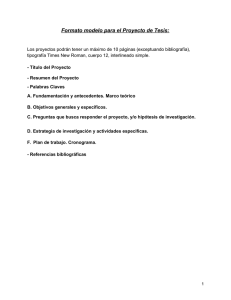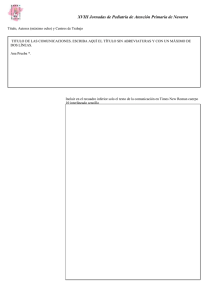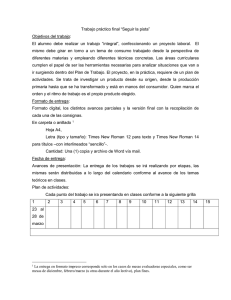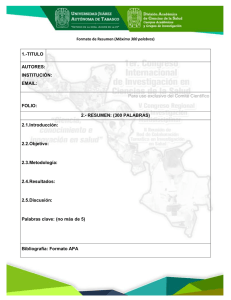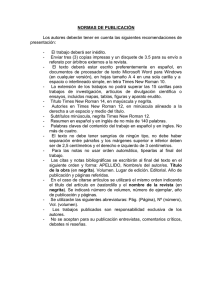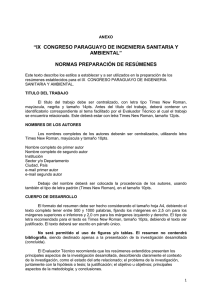Sin título 2
Anuncio
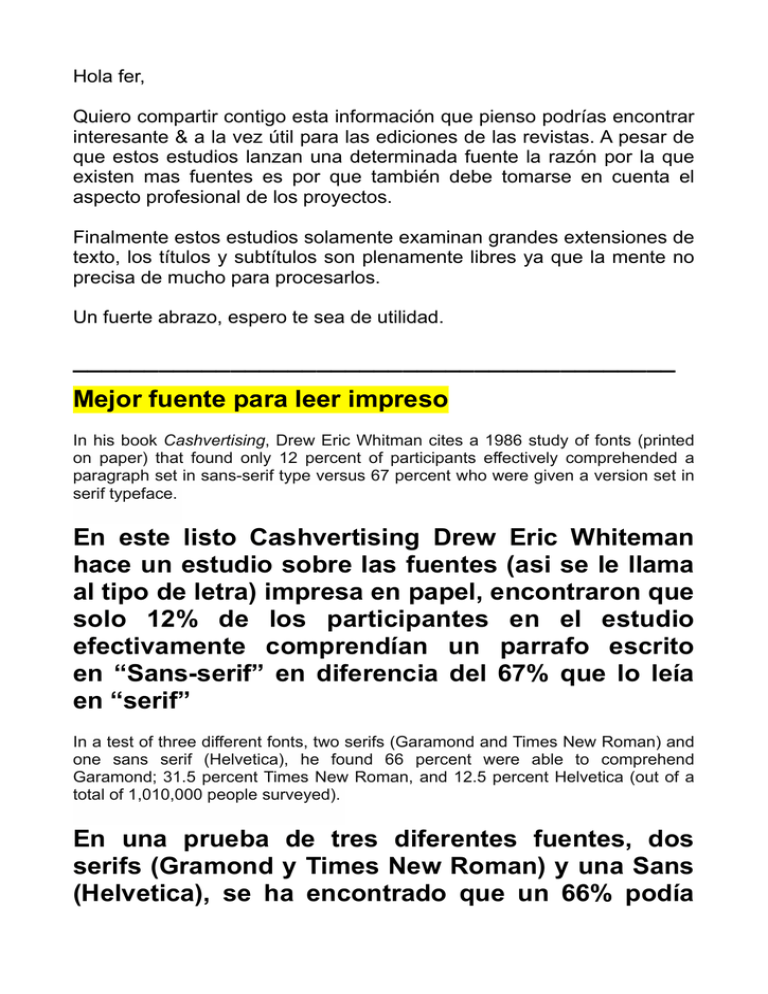
Hola fer, ! Quiero compartir contigo esta información que pienso podrías encontrar interesante & a la vez útil para las ediciones de las revistas. A pesar de que estos estudios lanzan una determinada fuente la razón por la que existen mas fuentes es por que también debe tomarse en cuenta el aspecto profesional de los proyectos. ! Finalmente estos estudios solamente examinan grandes extensiones de texto, los títulos y subtítulos son plenamente libres ya que la mente no precisa de mucho para procesarlos. ! Un fuerte abrazo, espero te sea de utilidad. ! __________________________________________ Mejor fuente para leer impreso ! In his book Cashvertising, Drew Eric Whitman cites a 1986 study of fonts (printed on paper) that found only 12 percent of participants effectively comprehended a paragraph set in sans-serif type versus 67 percent who were given a version set in serif typeface. En este listo Cashvertising Drew Eric Whiteman hace un estudio sobre las fuentes (asi se le llama al tipo de letra) impresa en papel, encontraron que solo 12% de los participantes en el estudio efectivamente comprendían un parrafo escrito en “Sans-serif” en diferencia del 67% que lo leía en “serif” ! In a test of three different fonts, two serifs (Garamond and Times New Roman) and one sans serif (Helvetica), he found 66 percent were able to comprehend Garamond; 31.5 percent Times New Roman, and 12.5 percent Helvetica (out of a total of 1,010,000 people surveyed). En una prueba de tres diferentes fuentes, dos serifs (Gramond y Times New Roman) y una Sans (Helvetica), se ha encontrado que un 66% podía comprenderlo en gramond, 31.5% en Times New Roman y 12.5% en Helvetica de un total de 1,010,000 personas encestadas. ! Conclusión: Gramound es la mejor fuente para texto impreso ! _____________________________________________________________ ! Mejor fuente para leer online: ! Now, one might assume that what works on the printed page will be similar to what works on the computer screen. But that's not the case. Ahora uno podría pensar que esto funciona igual tanto impreso como para la pantalla de una computadora, pero ese no es el caso. ! In order to make the little serifs appear legible, a high degree of resolution is required. The more pixels, the more details of the font you can display. Back 10 or so years ago, the best computer screen resolution was 800 x 600 pixels – which wasn’t great for defining the intricacies of a serif font. Screen resolution has increased through the years (resolutions of 1024 x 768 pixels or greater have become the norm). This makes serif fonts more legible but still generally not as easy to read as sans-serif fonts. Hace 10 años masomenos, la mejor resolución de pantalla era 800x600 pixels lo cual no era precisamente asombroso en lo que concierne a definición. La resolución de pantalla ha incrementado con el paso de los años esto hace que Serif Fonts sean mas legibles pero aun de forma general no tan fácil de leer como Sansserif. ! So online, the best font to go with is sans serif. A 2002 study by the Software Usability and Research Laboratory concluded that: 1. The most legible fonts were Arial, Courier, and Verdana. 2. At 10-point size, participants preferred Verdana. Times New Roman was the least preferred. 3. At 12-point size, Arial was preferred and Times New Roman was the least preferred. 4. The preferred font overall was Verdana, and Times New Roman was the least preferred. ! En un estudio de 2002 un laboratorio ha concluido que: ! 1.- La fuente la legible era Arial, Courier y Verdana 2.- en un tamaño de fuente de 10, los participantes prefirieron Verdana. The new Times Roman fue el menos preferido. 3.- En un tamaño de fuente de 12, Arial fue preferida y New Times Roman la menos preferida 4.- La fuente mas preferida entre todas fue Verdana, Y New Times Roman la menos preferida. ! ! Conclusión: Como notarás Aunque New times Roman y Gramound son las fuentes preferidas para leer en impreso, en linea la fuente es Arial al causar menor cansancio.

